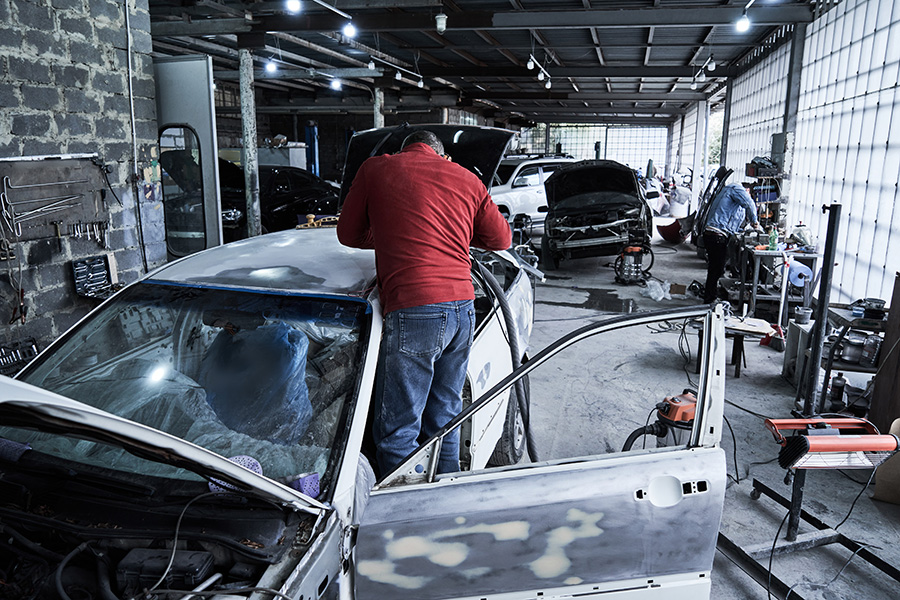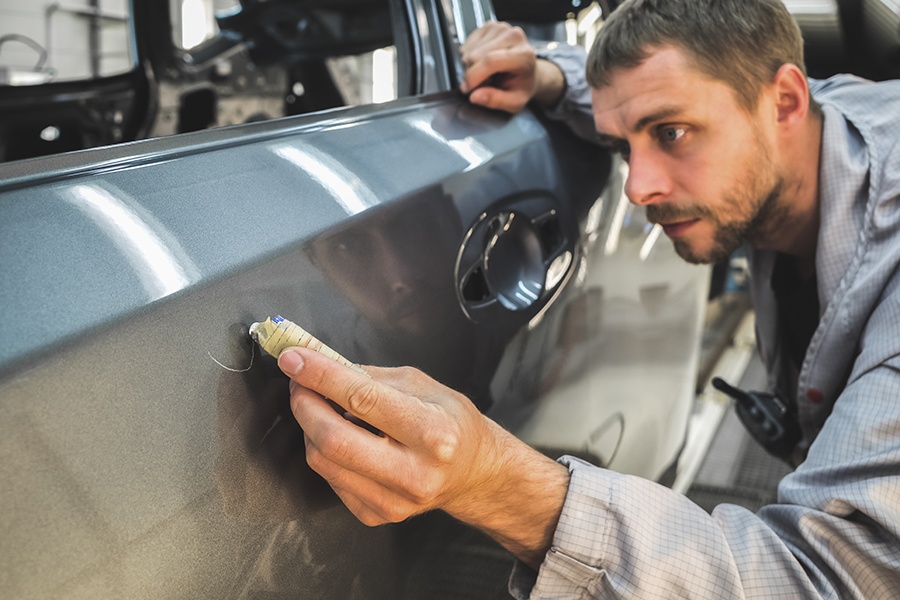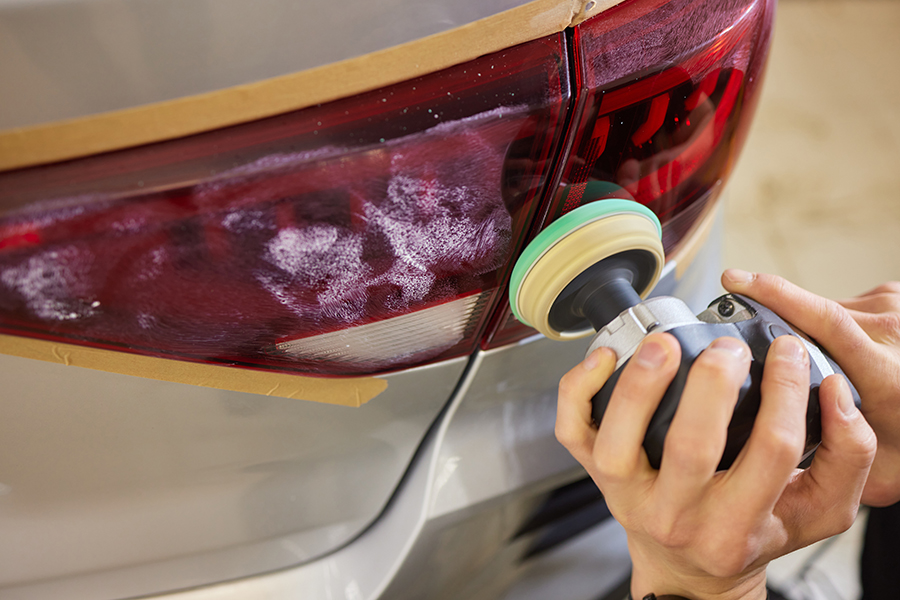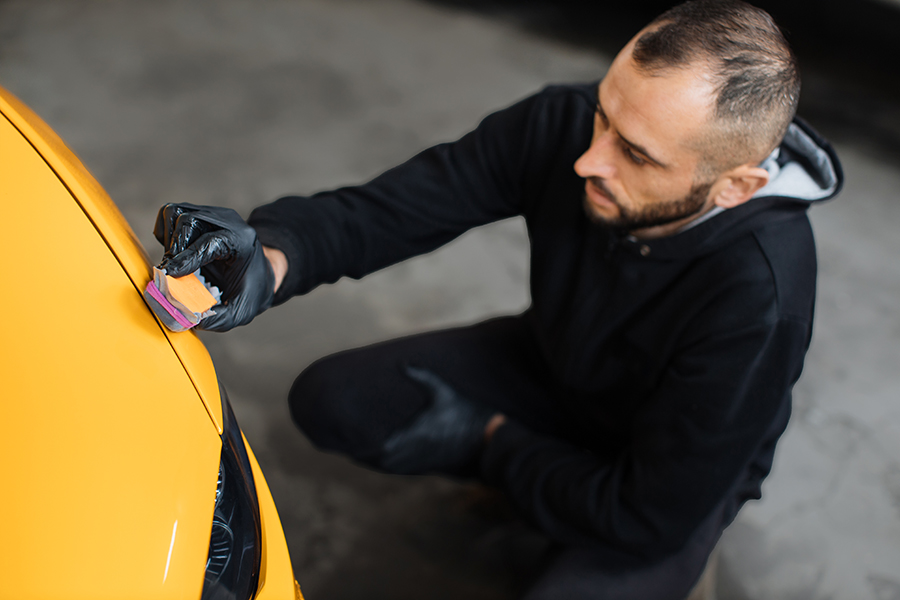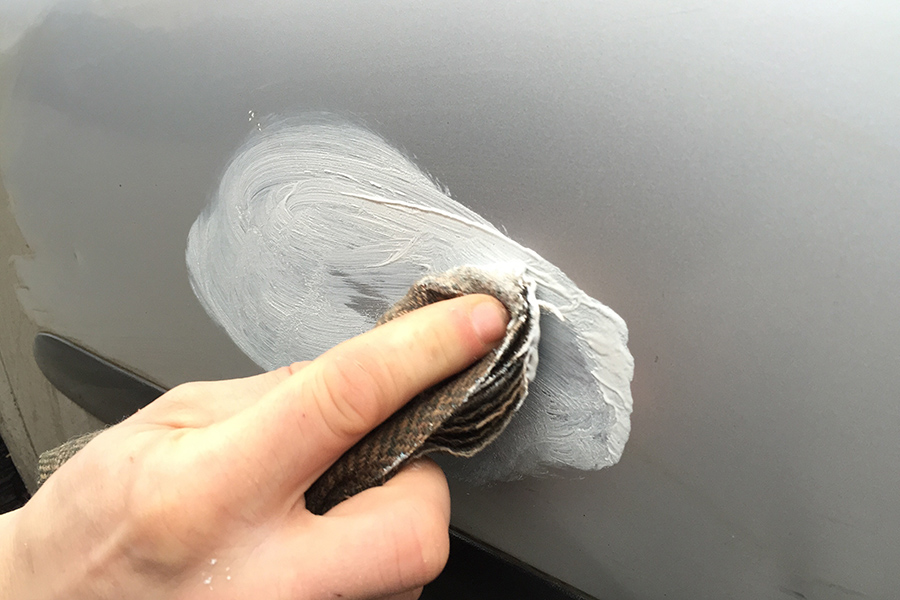Got a dent in your roof and thinking it's a small deal? Think again! Ignoring even the tiniest dent can lead to big headaches, like leaks and structural damage. That's where roof dent repair comes in as your superhero. It's not just about fixing a dent; it's about saving your home from future disasters. This post will dive into why getting those dents fixed pronto is crucial and how it can save you money and stress down the line. We'll keep it simple, skipping the jargon, so you get the info you need without the fluff. Whether it's from hail or a stray baseball, understanding roof dent repair can be your first step toward a safer, sturdier home.
Key Takeaways
- Check your roof regularly to spot dents early. This can save you money and prevent bigger problems.
- Roof dents can come from bad weather or things hitting the roof. Know what causes them so you can stop it from happening again.
- If you don't fix roof dents, they can make your roof weak and leaky. It's important to fix them fast.
- You can try to fix small dents yourself using tips from experts. But, if it looks hard, it's better to call a pro.
- Some pros use a special way to fix dents without needing to repaint. This method is called Paintless Dent Repair (PDR) and it's a good choice for many dents.
- Talk to your insurance company about roof dent repair. Sometimes, they might pay for the repairs.
- To stop dents in the future, follow advice from experts on how to protect your roof.
Identifying Roof Dent Damage
Common Roof Dent Signs
You might see visible dents or depressions on your roof. These are clear signs of damage. They tell you something hit the roof hard.
Check for areas that look uneven or sag. This means the roof's structure might be hurt. It could lead to more problems if not fixed.
Look for missing or damaged shingles. They are often the first to get hurt when something hits the roof. If shingles are gone or broken, water can get into your house.
Hail Damage Indicators
Hail can leave round dents or pockmarks on your roof. These marks show where hail hit. They are easy to spot.
Observe granule loss on shingles. Hail knocks off the protective granules. This makes the shingles weak.
Spot cracks or splits in roofing materials. Hail can hit so hard it breaks the roof's surface. These cracks can let water into your home.
Composite Shingle Damage
Detect curling or buckling shingles. This happens when shingles get old or water gets under them. It's a sign your roof needs help.
Find missing or broken shingles. Storms can rip them off your roof. This leaves your home unprotected from rain and snow.
Look for granule accumulation in gutters. When shingles wear out, their granules fall off and end up in your gutters. This is a clue your roof is getting old.
Metal Roof Damage
Identify dents or dimples in metal panels. These show where something hit the metal hard enough to leave a mark.
Check for scratches or paint damage. This can happen during a storm or when something scrapes against the metal.
Look for loose or displaced panels. Wind can lift metal panels off your roof if they're not secured well. This can cause leaks and other damage.
Causes of Roof Dents
Hail Impact
Hail can cause round, impact-induced dents on your roof. These are easy to spot. They look like small craters. You should also check your roof vents and skylights. Hail damage here is common. Your gutters and downspouts might get damaged too. Look for dents or bends in them. This shows the hail's power.
Falling Debris
Trees near your house can be a problem during storms. They drop branches or other items on your roof. This can puncture or tear your roofing material. It's bad news for your roof's health. Check if any shingles are missing or broken. This is a sign of debris damage. Also, see if there's a lot of stuff piled on your roof. Leaves and twigs can gather and hurt your roof over time.
Weather Conditions
Heavy rain and wind are tough on roofs. They can wash away or loosen shingles. Ice and snow are even worse. They build up and push down on your roof. This pressure can cause dents or damage. Over years, the sun's UV rays also wear down your roof. It makes materials weak and more likely to dent.
Risks of Ignoring Roof Dents
Water Leaks
If you ignore roof dents, water might sneak into your home. You might spot water stains on ceilings or walls. This is a sign that water is getting in where it shouldn't. It's not just about looks. Water inside can lead to more trouble.
You may also notice mold or mildew growth indoors. This happens when areas stay wet because of leaks. Mold and mildew can cause health problems and damage things in your home.
Another thing to check is the attic. If insulation there feels damp, it means water is getting through the roof. Damp insulation doesn't work well. This can make your energy bills go up because your heating or cooling has to work harder.
Structural Damage
Ignoring dents can hurt the structure of your house. You might see the roofline or rafters starting to sag. This means the roof's structure is weak. A strong roof is important for a safe home.
Look for cracked or split beams too. These are signs that the roof can't hold up well anymore. If the beams are damaged, the whole roof could be at risk.
The roof decking might also be compromised. This is the base that everything else sits on. If it's damaged, you could have serious problems. The whole roof might need to be replaced if this gets too bad.
Mold Growth
Mold loves wet places, and a leaky roof is perfect for mold. You might see black or green patches on the roof. These are mold colonies growing where they shouldn't be.
A musty odor in the attic is another sign of mold. This smell means mold is growing somewhere close by. It's not just unpleasant; it can be harmful to breathe in.
Mold exposure can cause health symptoms. People might have allergies, breathing problems, or other health issues because of mold. It's important to keep your home free from mold for everyone's health.
DIY Roof Dent Repair Tips
Basic Tools Needed
Before you start fixing dents on your roof, gather the right tools. You'll need a ladder to reach the roof safely. Make sure it's sturdy and tall enough.
Next, grab a safety harness. This keeps you secure while working up high. It's a must for safety.
You will also need a roofing hammer and nails. These help fix new materials in place. A pry bar is useful for removing damaged parts. Lastly, a putty knife helps apply sealant smoothly.
Step-by-Step Guide
First, do a thorough inspection of your roof. Look for all the dents and damage. This helps you understand the work needed.
Next step is to remove damaged shingles or panels. Use your pry bar carefully here. You don't want to damage good parts.
Then, install new roofing materials securely. Use your hammer and nails for this. Make sure everything fits well and is tight.
Safety Precautions
Safety is key when fixing your roof. Wear appropriate safety gear always. This includes gloves, goggles, and hard hats.
Make sure your ladder has stable footing. It should be on solid ground. Secure it well before climbing.
Lastly, avoid working in bad weather. Rain or strong winds can make roofing dangerous. Wait for a clear day to start your repairs.
Professional Roof Repair Services
Benefits of Hiring Experts
Hiring experts for roof dent repair brings many advantages. You gain access to professional expertise. Professionals know how to fix any roof problem. They have the skills and tools.
They ensure high-quality materials and workmanship. This means your roof will last longer. You won't have to fix it often.
You also save time and reduce personal risk. Fixing a roof can be dangerous. Experts know how to do it safely. This keeps you safe.
Finding Reliable Services
To find reliable roof repair services, first check for proper licensing and insurance. This protects you if something goes wrong.
Then, read reviews and ask for references. Happy customers are a good sign. They show the service is good.
Lastly, compare quotes from multiple contractors. Don't just look at the price. Consider what you get for your money.
Cost Considerations
When thinking about cost, factor in material and labor costs. Quality materials cost more but last longer. Skilled labor is worth paying for.
Consider potential hidden damages too. Sometimes, what looks like a small problem is bigger once you start fixing it.
Evaluate long-term savings versus upfront costs. Paying more now might mean saving money later. A well-fixed roof doesn't need repairs often.
Paintless Dent Repair (PDR) for Roofs
What is PDR
Paintless Dent Repair, or PDR, is a method to fix dents in roofs. It does not harm the paint. This technique uses special tools. They push or pull dents from the underside of the roof. PDR works well for small dents and dings. It keeps the original paint intact.
Professionals use PDR because it's gentle on your roof. It fixes dents without needing to repaint. This method is perfect for minor damage. It leaves your roof looking as good as new.
Advantages of PDR
One big plus of PDR is it keeps your roof's original finish. You won't need to match paint colors. This saves you time and money. Repairs are done faster with PDR. Often, it costs less than traditional methods.
PDR also helps the environment. It uses no chemicals or paints. This means less waste and pollution. Keeping your roof's original finish is not just about looks. It also helps protect your roof longer.
When to Use PDR
Use PDR for small, shallow dents on your roof. It's best when the paint is still good — no cracks or chips. Metal roofs with minor damage are ideal for this repair method.
PDR is not for big, deep dents or damaged paint. For those issues, you might need more help than PDR can give. Remember, keeping your roof in top shape is important. It protects your home from weather and wear.
Insurance for Roof Dent Repair
Coverage Options
When you find dents on your roof, especially after a storm, it's time to check your homeowner's insurance policy. Most policies cover damage from natural disasters. But, the coverage limits and what's excluded can vary a lot.
It's important to read the fine print. Some policies might not cover certain types of damage or might have a high deductible. For roofs, considering additional coverage is wise. This extra step can save you money in the long run. Roof-specific insurance could cover repairs like paintless dent repair (PDR), which was mentioned before.
Filing a Claim
The first step is to document the damage. Take clear photos and write down notes about what happened. This evidence is crucial for your claim.
Next, call your insurance company right away. The sooner you report the damage, the better. Give them all the details and the evidence you collected.
Keep tabs on your claim status. Insurance companies can be busy, especially after a big storm. Checking in regularly helps keep things moving.
Working with Adjusters
An adjuster will need to see the damage to assess it. Schedule this inspection as soon as you can. Be there if possible to show them the damage yourself.
Give the adjuster all your documentation - photos, notes, everything. This makes their job easier and supports your claim.
Lastly, talk about the repair estimates and how much the insurance will cover. If you're considering PDR for your roof, mention it here. Discussing it with the adjuster ensures they consider it in their estimate.
Preventing Future Roof Dents
Regular Inspections
It's smart to look at your roof twice a year. This helps you catch small problems. You should also check it after big storms. If you find little issues, fix them fast. This stops them from getting bigger.
After dealing with insurance for roof dent repair, keeping your roof in top shape is key. Regular checks help avoid more claims. They save you time and stress later.
Protective Measures
One way to stop dents is by using strong roofing materials. These can take hits from things like hail without getting damaged. Adding gutter guards is another good idea. They keep leaves and other stuff from clogging up your gutters. This means water flows away from your roof better.
You should also cut back any branches hanging over your roof. Branches can fall and cause dents or other damage. By trimming them, you make your roof safer.
Maintenance Tips
Keeping gutters clean is important. It helps rainwater flow away properly. If gutters are blocked, water can back up and hurt your roof. Also, if you see a broken shingle, replace it right away. This keeps the problem from spreading.
Checking for gaps or holes in the roof is another good step. If you find any, seal them up to keep water out. This kind of care keeps your roof strong against dents and leaks.
Expert Tips for Roof Dent Repair
Choosing the Right Materials
Selecting materials is crucial. You want something that lasts long. Durability matters a lot. Also, think about how well materials stand up to weather. Some are better than others. This means they can handle rain and sun well.
Materials should also save energy. Good ones keep your house cooler in summer. They also match your home's look. You want your roof to look nice. It matches your house style this way.
Timing Your Repairs
It's best to fix roofs when the weather is kind. Mild conditions are perfect. This makes work easier and safer. Try not to fix roofs when everyone else does. Times like before winter are very busy. You might not find help easily then.
Fix small problems early too. Don't wait for them to get big. This saves money and stress later.
Long-Term Solutions
Think about the future when fixing roofs. Choose strong roofing systems. They last longer and give fewer headaches. Make a plan to check your roof often. This helps catch problems early.
Adding a coating to your roof is smart too. It gives extra protection from water and sun. Coatings can make your roof last even longer.
Final Remarks
You've got the lowdown on fixing those pesky roof dents, from spotting the damage to DIY tricks and pro help. Roof dents might seem small, but they're big deals. Ignoring them? Bad move. They can lead to leaks and more cash out of your pocket down the line. Whether you're tackling it yourself or calling in the pros, staying on top of roof health keeps your home safe and sound. And hey, don't forget about insurance and prevention. They're your best pals in keeping costs down and dents at bay.
hat's next? Grab that ladder or phone, and get on it. Your roof's not gonna fix itself! Keep those tips in mind, and you'll have a dent-free, happy home. And if you're ever in doubt, loop in a pro. They've got the tools and know-how to make your roof good as new.
Frequently Asked Questions
How can I tell if my roof has dent damage?
Look for any irregularities on the surface, such as small dips or depressions. If it looks like the skin of an orange or has noticeable indentations, you've likely got some dent damage.
What causes dents in roofs?
Mostly, it's the wrath of Mother Nature. Hail storms are the usual suspects, but heavy branches falling or even someone walking carelessly on a fragile roof can leave a mark.
Why shouldn't I ignore roof dents?
Ignoring them is like ignoring a small leak in a boat; eventually, it'll lead to bigger problems. Water can seep through, causing leaks and weakening your roof's structure over time.
Can I fix a roof dent myself?
Yes, for minor dents, there are DIY fixes involving tools like mallets and planks. But remember, it's like performing surgery on your house. If you're not confident, let the pros handle it.
When should I call in professionals for roof dent repair?
If your roof looks like it's been through a boxing match with multiple or large dents, it's time to tag in the professionals. They have the right tools and know-how to fix it up properly.
Is Paintless Dent Repair (PDR) suitable for roofs?
Absolutely! PDR is like magic for dents when there's no damage to the paint. It's less invasive and can make those dents disappear without a trace.
Will my insurance cover the cost of repairing roof dents?
It depends on your policy and what caused the damage. Generally, if Mother Nature threw a tantrum, you're likely covered. But always check your policy details first.
How can I prevent future roof dents?
Think of your roof like a knight's armor. Trim any nearby trees to keep heavy branches at bay and consider impact-resistant materials if you're in a hail-prone area. Just like a knight prepares for battle, preparation is key.
